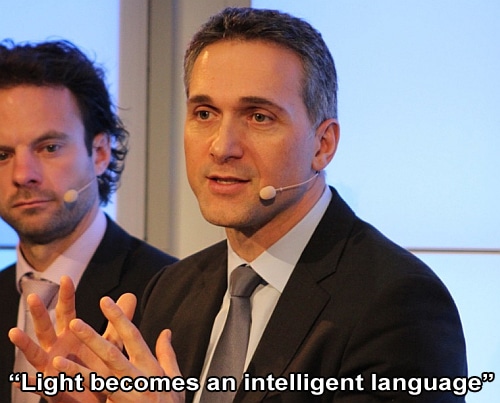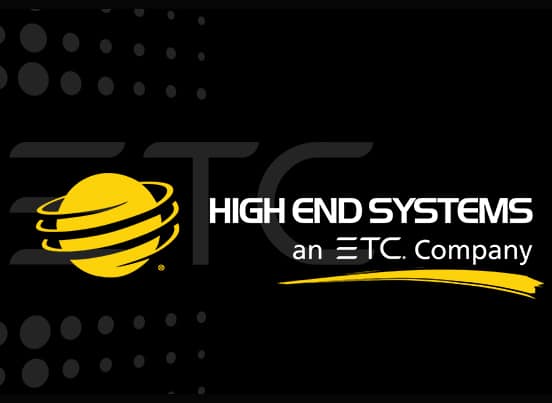
I saw an interesting article this weekend from CNN World’s website. A company called Eight19 has created a pay-as-you-go solar technology called IndiGo that is being deployed right now in Kenya. Check this out, this is Simon Bransfield Garth, the CEO of Eight19. I knew I would like this company as soon as I realized what “Eight19” meant – it’s the time that a ray of light from the sun reaches Earth. Here’s Simon:
Here now is a quick video of a man named Samuel talking about the benefits of his Pay-As-You-Go Solar installation:
This is some pretty cool stuff. The solar technology that Eight19 prides themselves on is a low-manufacturing-cost solar cell printed on a plastic film. The reason that they can have products that are so low cost is that the printing method benefits from being able to use the high-speed roll printing technology that exists in the solar printing industry. From the Eight19 website on the benefits of printed solar technology:
So, when the customer purchases the IndiGo package for installation, they get an Eight19 solar panel that connects into the IndiGo device. The gist of the system is this: without the customer “topping up” their IndiGo device via their cell phone, the device doesn’t charge the battery inside the device. From the IndiGo website:
IndiGo is an affordable solar lighting and battery charging system that brings low cost energy to off-grid communities. With IndiGo, users put credit on their solar cell, just as they would on a mobile phone. Power from the cell then charges the battery in the IndiGo box, making electricity available for lighting or charging other devices, such as mobile phones. The top-up codes are sent securely to owners’ mobile phones as text messages. Without the codes, the system does not generate electricity. The IndiGo 2.5W solar home lighting and charging system includes: A solar panel and IndiGo box with a charge controller and battery; an LED lamp; an adapter lead for most popular mobile phones; connecting cables; and two, one-day top-up cards.
For most Americans who haven’t been overseas or in Canada, with pre-paid cell phones, you buy minutes on what’s commonly called a Top-Up card. No different than the ones in the USA, they’re based on minutes, all that.
So the idea here is that people in South Kenya will not have to use kerosene lamps inside their places at night to do what they have to do needing illumination. This is a tremendous thing; one of the biggest increases of our technological development has been increasing the CRI of the light we use to do things like read and develop. With this implementation, the people in South Kenya will be getting some seriously higher CRI than kerosene-powered sources. This cannot be a bad thing, right? Hell no. People that live in kenya are no different than people who go to Yale. They have the same potential as all of the rest of us, especially when given the opportunity to grow with the rest of the world. No matter where you grow up, as long as you are given the opportunity to develop, you will succeed, especially if you apply yourself.
Something that I found interesting was found in the comments of the excellent CleanTechnica article on the IndiGo system. A user named Bob_Wallace (THE Bob Wallace? Or the Shareware guy? I kid, I have no idea) posted some email exchanges he had with Simon from Eight19. The bolded markings are things I’d like you to pay close attention to in the paragraph:
“The cost and payoff time varies a little by country as you would expect (for example there are variations in transport costs, distribution costs and local taxes between locations). In Kenya the weekly fee is 100KSH (approx $1.10) for our “duo” product with 2 lights and phone charging.
After a period of time, the product is deemed to be paid up and the customer has the option to buy the product out for a small fee or upgrade to a larger system. Again, this period varies a little between country but is normally between 18 and 24 months.
Our initial estimates suggest that typical users save in excess of $2/week with the kerosene and phone charging costs they save, with some users saving much more than this.”
In reply to a question about how upgrades work…
“People return the old system and get a new one (with the exception of the lights/wiring unless it needs replacement, as it is pointless to take down old one only to put the same thing back). We then refurbish and reintroduce the old systems. The weekly fee for the new larger systems takes into account the fact that we have recovered some value from the old system so they pay less than if we had to cover the full cost of the new system.”
Rough math says that Eight19 is able to get people in ownership of a basic lighting/phone charging system for somewhere just above $100US.
($1.10 x 52 weeks x 2 years = $114.40)
After two years they should have free power for a few years. The battery will need to be replaced after a few years and the LEDs after several. The panel should last a lifetime or more.
This is something to check out – basically a person using the IndiGo system uses it for about two years before they’ve paid it off, at the tune of about $114.40 USD. The figure is for their “duo” product with two lights and a phone charger that has several charger tips for different phones. After two years they have a few years of free solar electricity conversion. Now granted it’s only at about two watts, but it’s free where before they’d have to pay to get kerosene to charge their stuff and see in the dark. I think this is a pretty cool idea, as does the organization SolarAid, who has partnered with Eight19 to do this project in South Kenya. From the SolarAid press release on the subject:
Thanks to the work of SolarAid and other players in the sector over the last few years, solar lights and phone chargers have been available for some time across Africa, but the initial cost is beyond the reach of many potential customers. By offering solar power as a service, without high purchase costs, these customers can now access clean electricity for less than their current spend on kerosene. But more than this, the availability of affordable electricity stimulates social and economic development too.
I think this is a pretty cool thing that’s happening. When you think of the costs though, I think you should just remember that the Kenyans aren’t paying in USD. One Kenyan Shilling (KES) is worth about 1.2 pennies USD. Consider that when you consider the cost. For example, right now a watt of solar if you just buy the photovoltaic panel is between $2.19 USD/W (for a 60W panel) up to $5.44 USD/W (for a 130W panel). With the rest of the gear you’ll have to buy (cables, batteries, control), you’re looking at about $8.00 USD per watt of generated electricity. I mean, come on though – after about the first six months, collecting solar using a device and a PV panel rather than taking it from a grid situation is going to pay for itself. The sun is free, kids. When some company or some government starts saying hey dummies! we’re going to charge you for solar power by making you pay us for collecting it, then I am going to freak out and be really loud about it to the world, and then the world needs to kick some corporate or government tail. Right now, no matter where you are, you’re paying for the devices that help you collect and store electricity, not for the solar energy itself A lot of people make cracks online about how “solar should be free,” and they are totally right. There is nothing that stops you from inventing your own solar collecting system for your own usage; money perhaps, but as long as we’re Capitalists, money will always be an issue. Eight19 is a company, and they’re doing what a company does, and their particular skill is making and selling solar power collecting systems. The power companies have done the same thing essentially, you’re just paying for them to make the power, and using their lines for them to get it to you. In the US, we pay for this power from them by the kilowatt-hour, at an average of $0.118 per 1000W/h.
What do you think? Do the costs add up? The prices in Kenya are about comparable to American prices according to Numbeo, if not maybe a bit cheaper overall on average.
Thanks to USEIA, IndiGo Off-the-Grid, The Times, Triple Pundit, and Numbeo!








